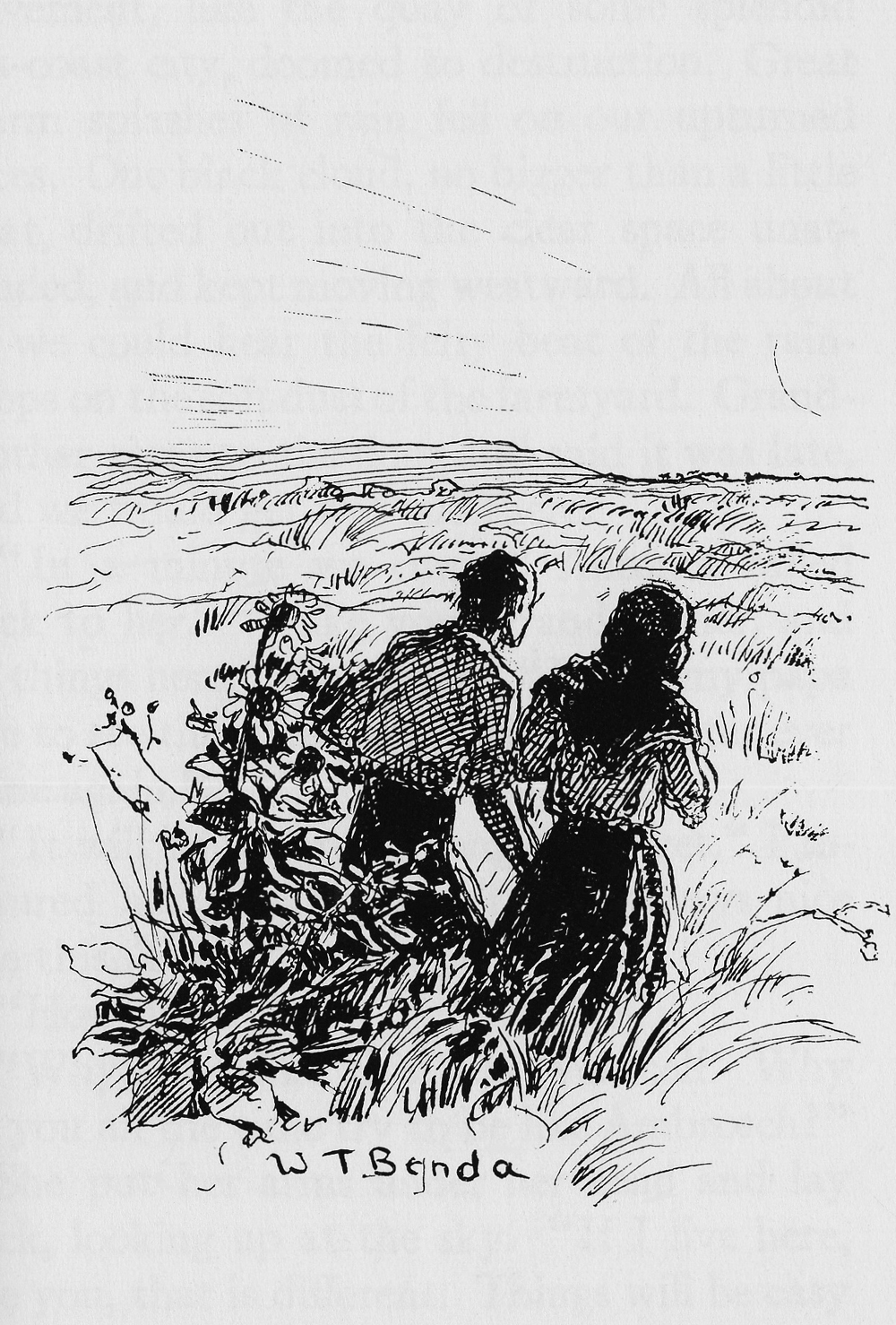A July picnic with Ántonia Shimerda is among Jim Burden’s indelible youthful memories.
It’s a pleasant platonic outing among friends shortly before Jim leaves for college in Lincoln. Significantly, it marks a turning point in Jim’s maturity, the end of “old times,” and Jim’s resistance to his attraction to Ántonia. “We’ll take a nice lunch and have a picnic. Just us,” says Antonia, “nobody else. Couldn’t you happen along, Jim? It would be like old times.”
As it happens, they are joined by Ántonia’s friends Lena Lingard, Tiny Soderball, and Ann Hansen. They play with him, especially Lena Lingard, who combs his hair suggestively. Jim, however, is unaware that she might be suggesting her feelings for him. He has no romantic or sexual interest in the girls, even Ántonia.
At sunset, Jim and Ántonia separate from the others and walk towards the setting sun. Cather means this to signal the ending of Jim’s and Ántonia’s youth and the divergence of their lives: he to college and a career; she to marriage and motherhood. But neither of the two realizes that their future lives will diverge for twenty years before their friendship resumes.
Jim’s acute mastery of detail seems photographic; “Presently we saw a curious thing: There were no clouds, the sun was going down in a limpid, gold-washed sky. Just as the lower edge of the red disk rested on the high fields against the horizon, a great black figure suddenly appeared on the face of the sun.” The ominous figure is a plow left standing in the field, and when they realize what it is, they walk on until it gets dark.
At Cather’s request, W.T. Benda illustrated the novel. Among his pictorial choices is Jim and Ántonia’s walking towards the setting sun.” Though Cather’s text suggests that the sunset signals the end of their “old times,” Benda omits the ominous (negative) “great black figure” of the plow.
Featured Image: “There were no clouds, the sun was going down in a limpid, gold-washed sky.”
See Willa Cather. My Ántonia. Houghton Mifflin: Boston, 1918; My Ántonia. Illustrated by W. T. Benda. Charles Mignon and Kari A. Ronning, Eds. Lincoln, Nebraska: University of Nebraska Press, 1995

